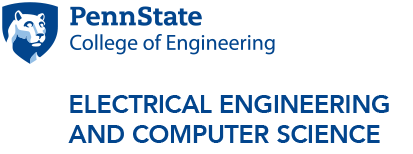EE Colloquium: Heterogeneous Integration for III-V µ-CPV and Engineered Substrates
Abstract: Microscale Concentrator Photovoltaics (µ-CPV) hold great promise for improving performance in both terrestrial and space environments through reduced cell heating, elimination of metal grid shadowing, increased specific power (watts per kg), and increased volumetric energy density (watts per cubic meter). NRL is developing µ-CPV designs that leverage mechanical stacking of microscale devices from different host substrates—via micro-transfer printing—to produce 5-junction architectures with extremely high spectral utilization and minimal thermalization loss. The development of these devices and arrays will be detailed, as well as programmatic highlights, including multijunction solar cells that achieve 44.5% terrestrial and 35.5% AM0 concentrator efficiencies.
With the use of multiple substrates comes the opportunity for a new manufacturing strategy. The final portion of this presentation describes NRL’s efforts to reduce the cost of III-V substrates. This was accomplished using a single source substrate to produce many virtual substrates—separated by release layers—in one epitaxial growth run, followed by selective and sequential removal of each virtual substrate layer and micro-transfer printing each layer to separate low-cost handles. Epitaxial regrowth of solar cells on transfer printed virtual substrates show performance within 1% – 2% (abs.) AM1.5 efficiency relative to baseline devices. Materials and electrical characterization of resultant devices provide comparisons of crystal quality across various low-cost handle wafers.
Biography: Kenneth J Schmieder has extensive background in III-V photovoltaics as well as micro-assembly/fabrication of advanced optoelectronics via micro-transfer printing. Dr. Schmieder has epitaxially grown (MOCVD), fabricated, and characterized solar cells that are among the highest performers in literature, including a stacked 5-junction with antimonide-based bottom junctions achieving 44.5% terrestrial concentrator efficiency with unparalleled spectral utilization, as well as a stacked 5-J with InP-based bottom junctions achieving 35.5% AM0 at 92 suns concentration. Dr. Schmieder manages a micro-transfer printing research portfolio that includes high-performance photovoltaics, laser power beaming, engineered substrates, and neurophotonics. He has been the recipient of NRL’s Edison Memorial Fellowship (2020) and Karles Fellowship (2016), and had previously been awarded an NRC Postdoctoral Fellowship to begin his career at NRL (2013, National Research Council) as well as the Bill N. Baron Fellowship for excellence in photovoltaic Ph.D. research (2012, University of Delaware
Event Contact: Chris Giebink



